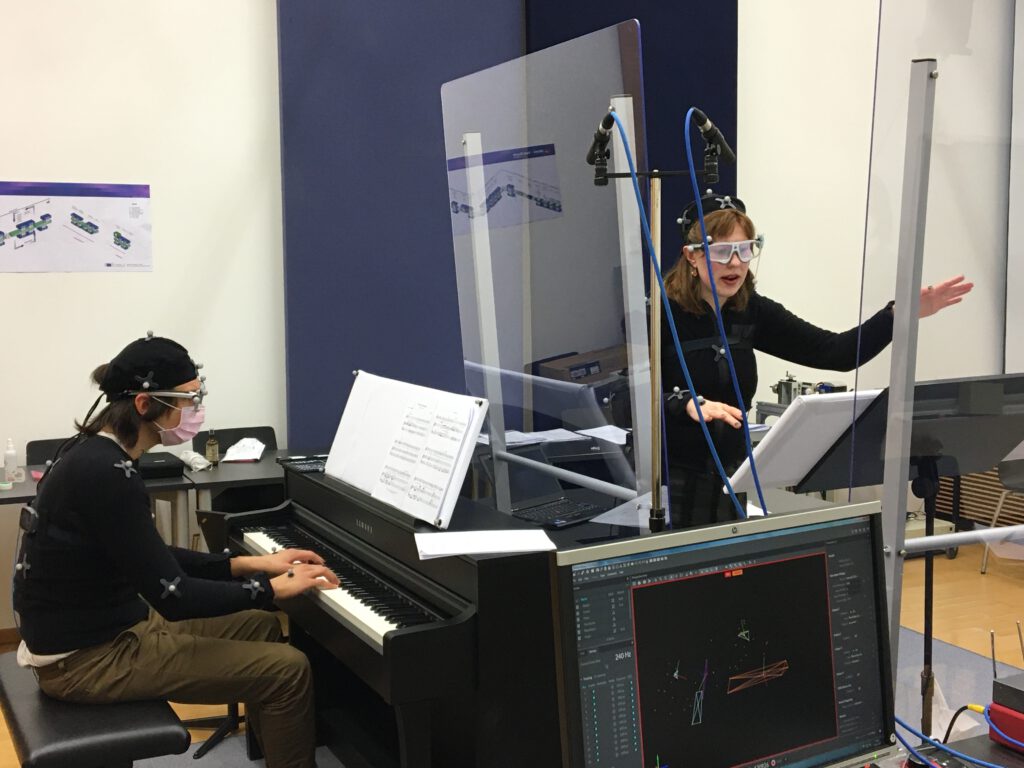
Achieving Togetherness in Ensemble Performance
People experience rewarding feelings of social connectedness or “togetherness” when playing music with others. What factors encourage or discourage feelings of togetherness? How does togetherness relate to coordination in sound, expressive body motion, and psychophysiological arousal? When ensemble members feel strongly together, is that feeling communicated to the audience?
This project investigates togetherness in music ensembles, and its behavioural and psychophysiological correlates, from performers’ and audiences’ perspectives. We consider how factors like empathic perspective-taking abilities and the opportunity to communicate visually influence performers’ coordination and experiences of togetherness. We also examine different aspects of ensemble performers’ coordination, including their sound, body motion, and breathing, to test whether these can reliably index togetherness and/or communicate togetherness to audience members.
The project includes a combination of performance and perception experiments. In performance experiments, multi-modal data are collected as skilled classical musicians perform in duos. These data include audio, motion capture, eye-tracking (gaze and pupillometry), breathing, and cardiac activity. In some cases, performers’ subjective ratings of togetherness are also collected.
The project takes an interdisciplinary approach, and combines and integrates insights and methods from different disciplines (performance science, psychology, computer science, acoustic engineering, cognitive science).
Read more about our different studies at the links below:
Audience judgments of togetherness in recorded duo performances
Interactive head motion in piano-singing duo performances
Cognitive effort and experiences of togetherness
Self-reported experiences of togetherness in music ensembles
Voice matching and choristers’ body motion
Respiratory organization during piano-singing duo performances
Breathing patterns during vocal imagery